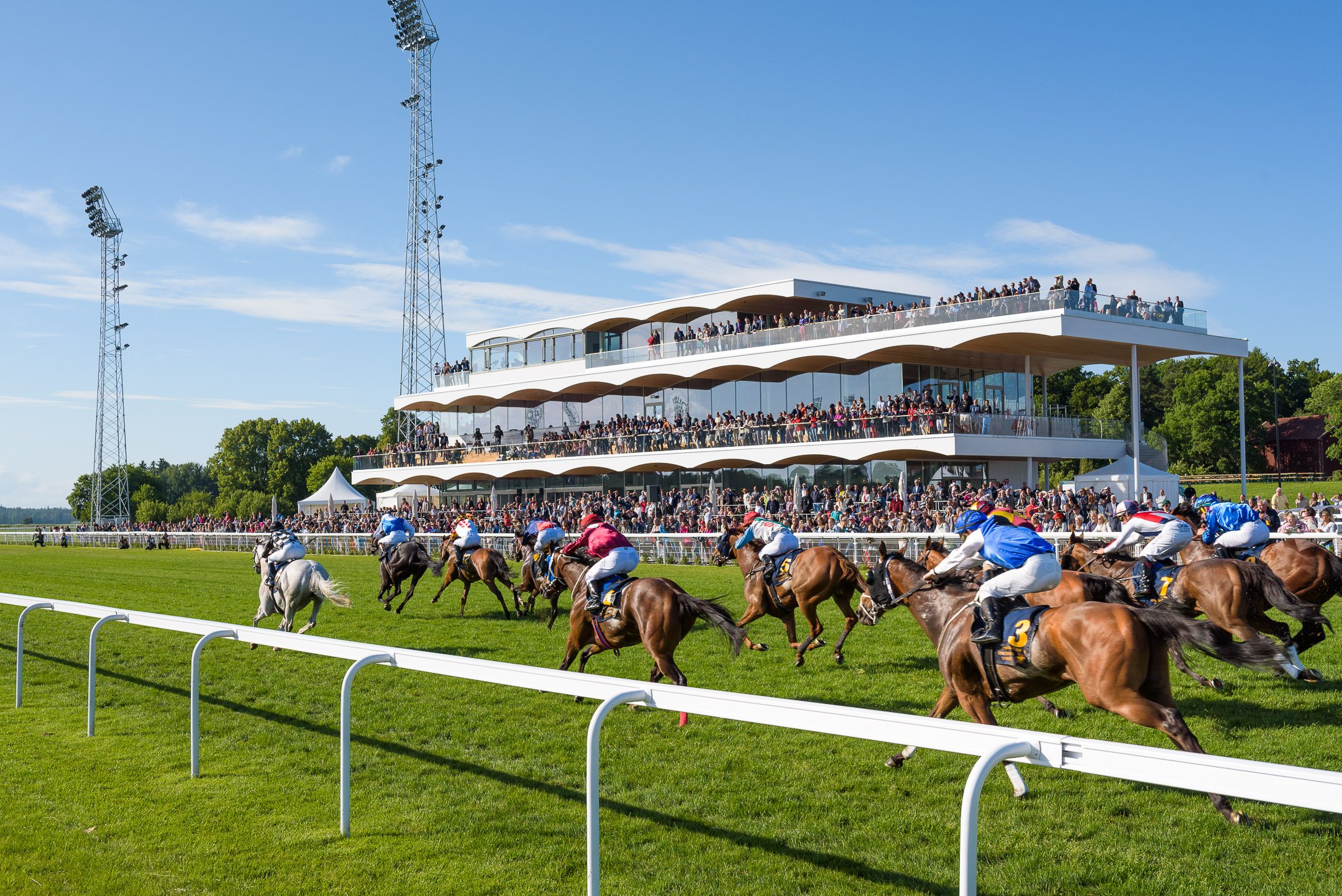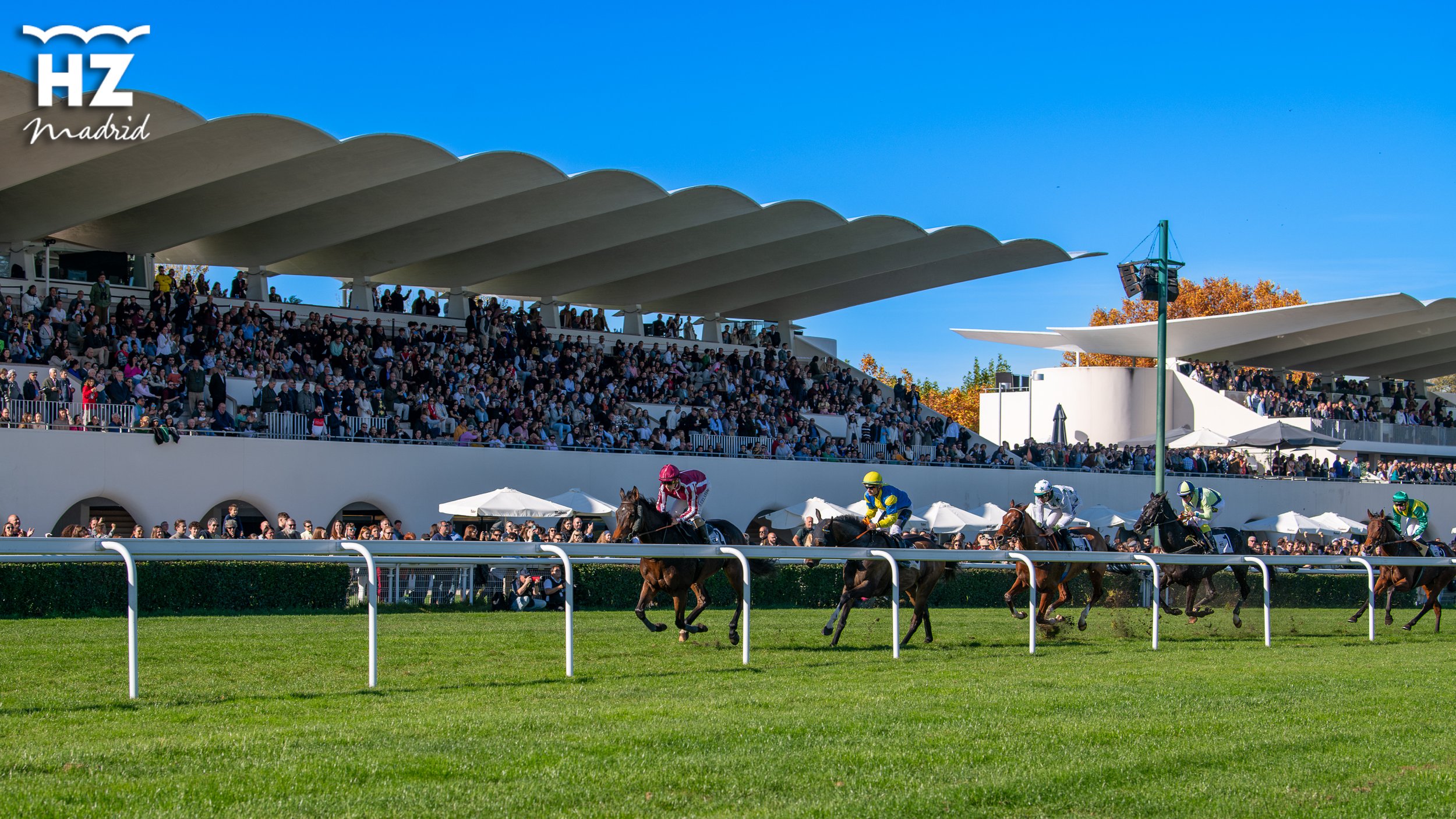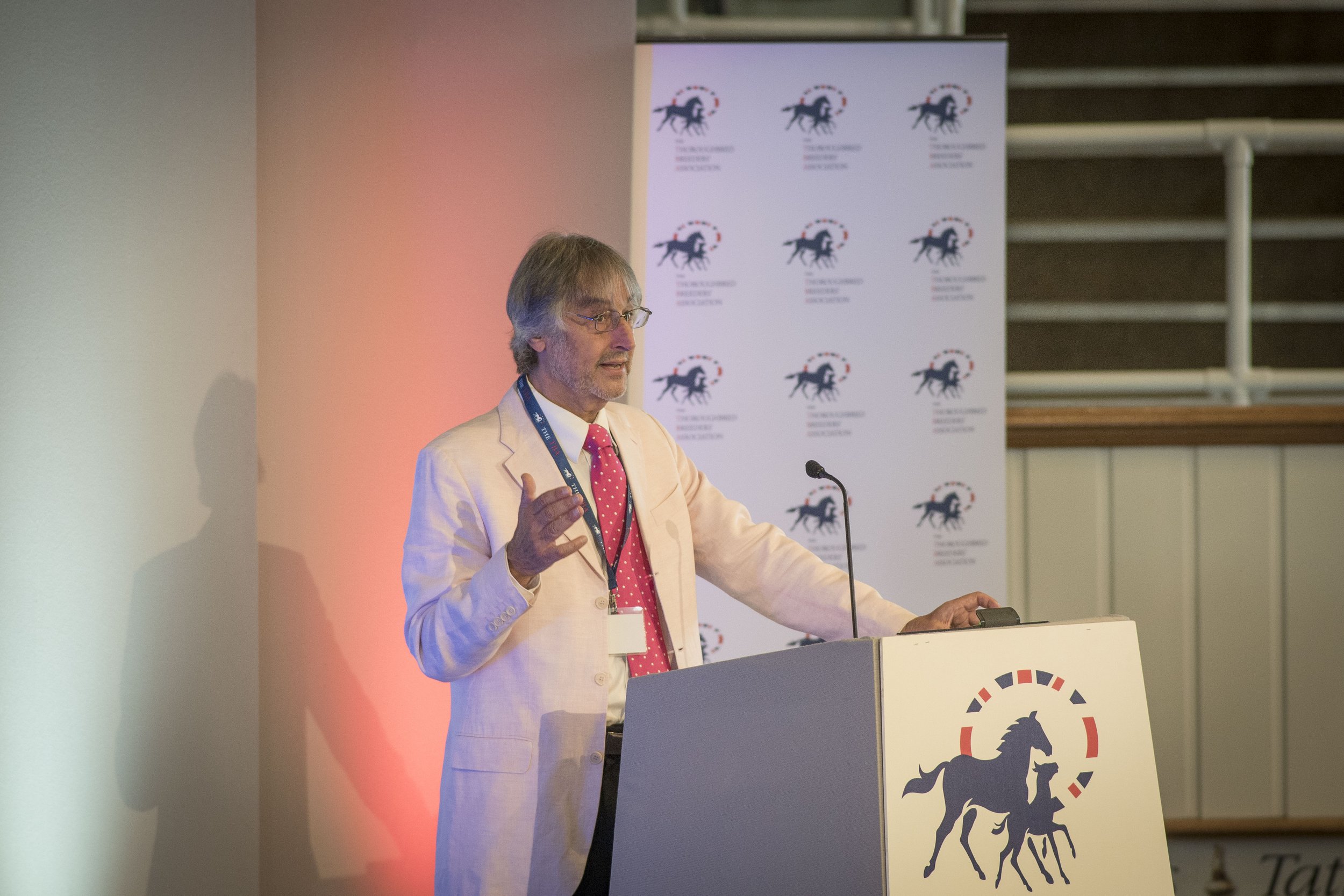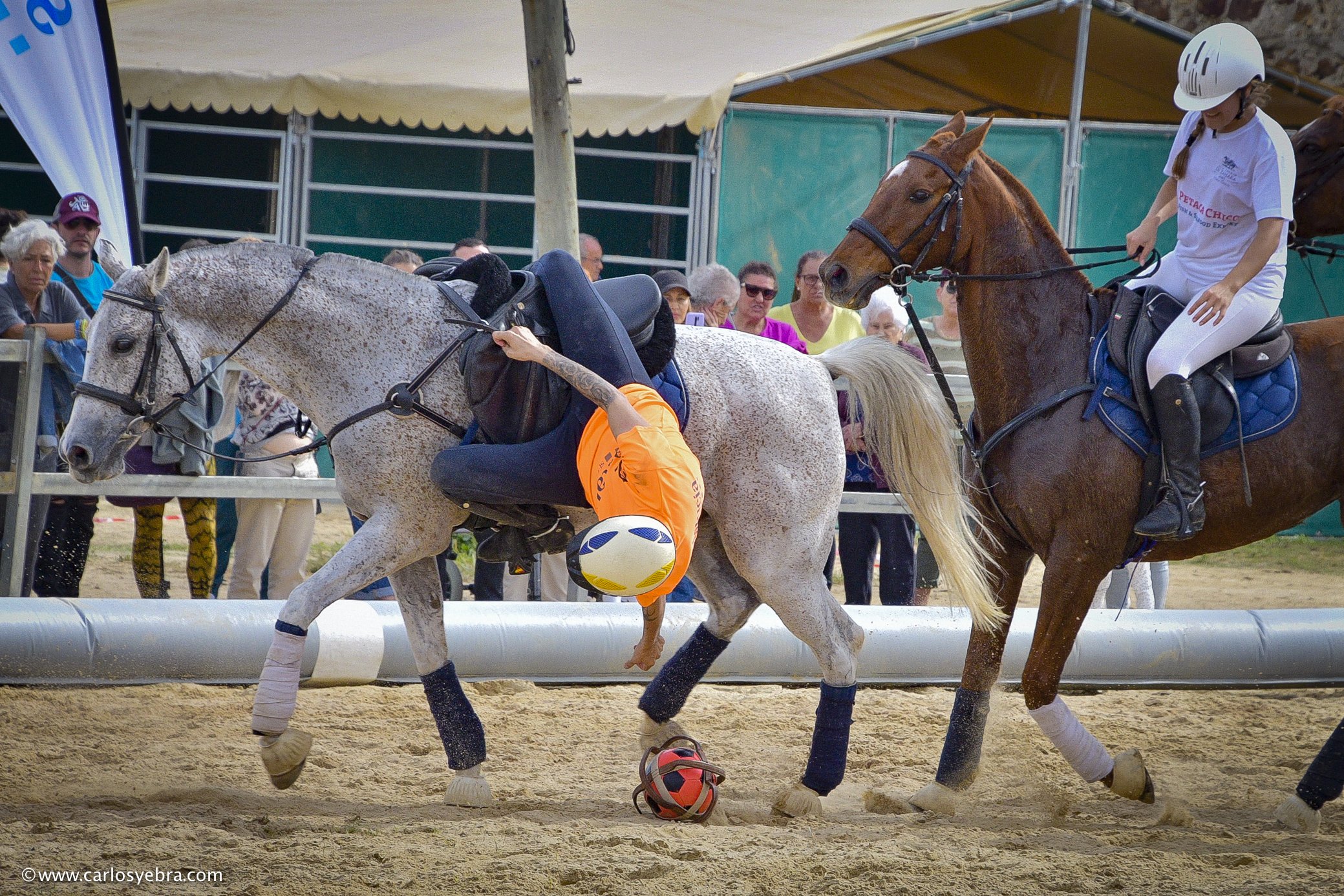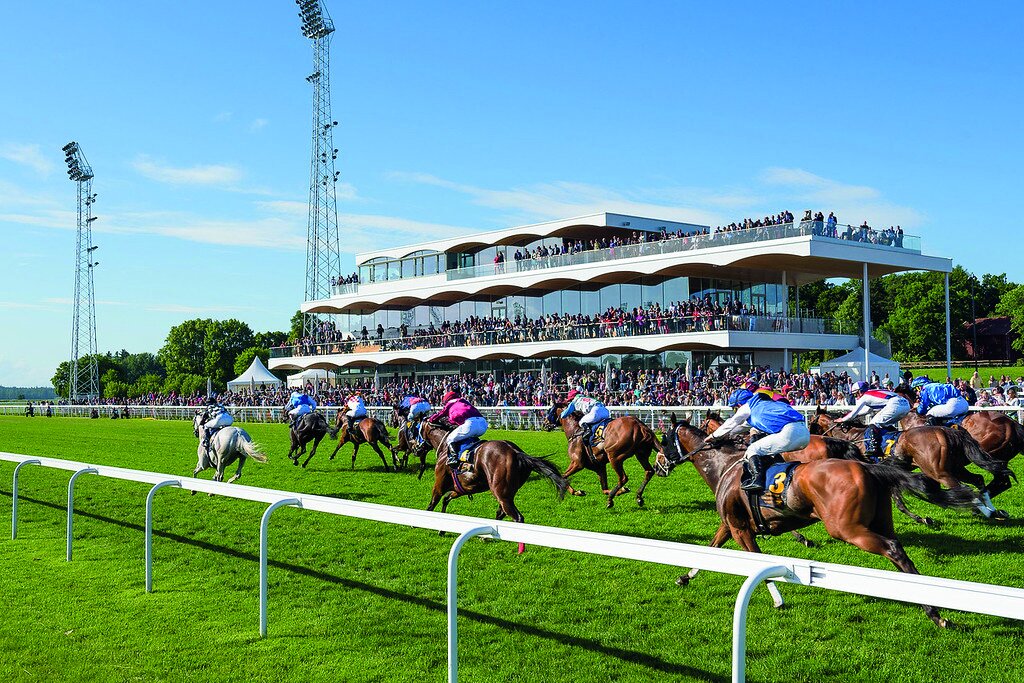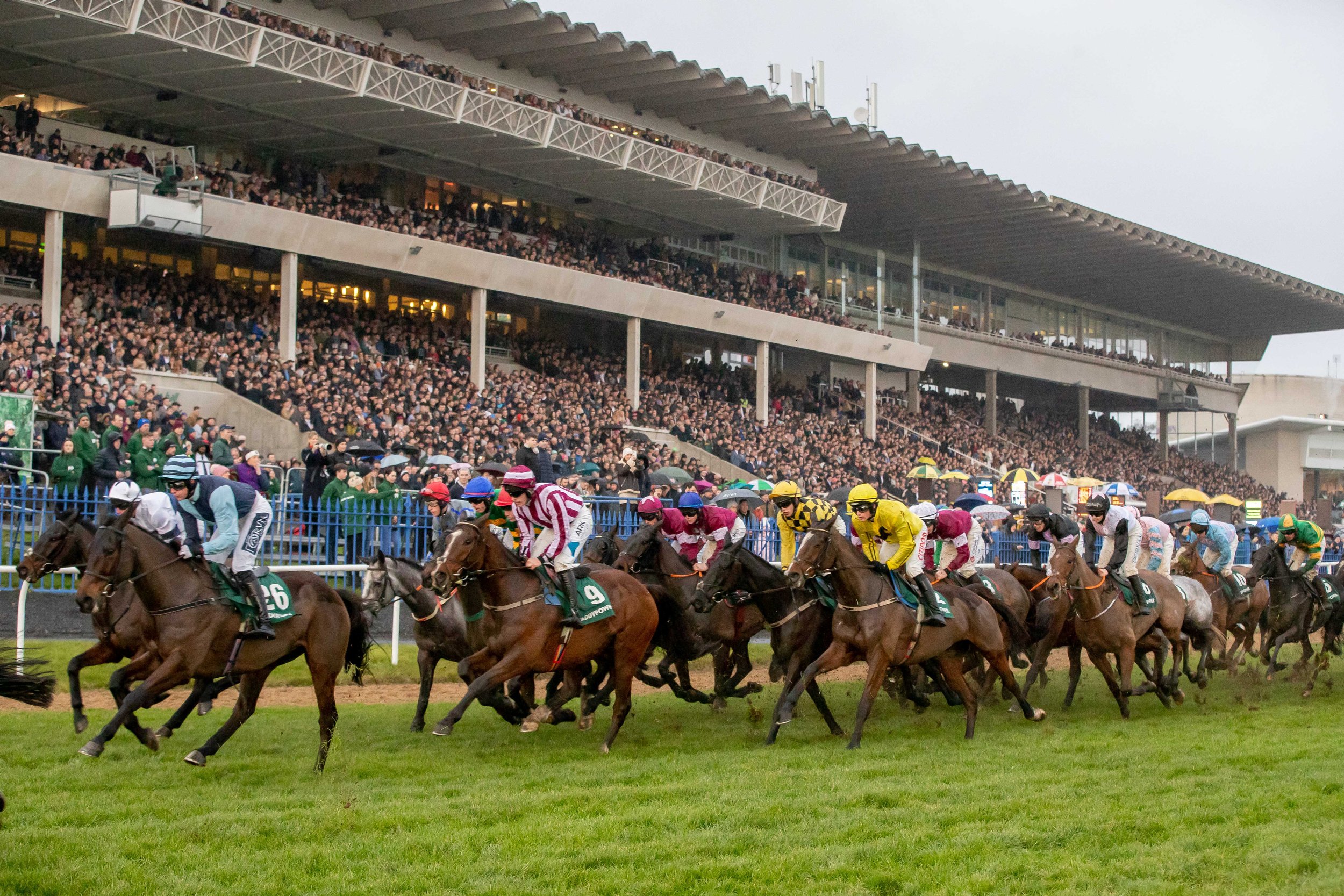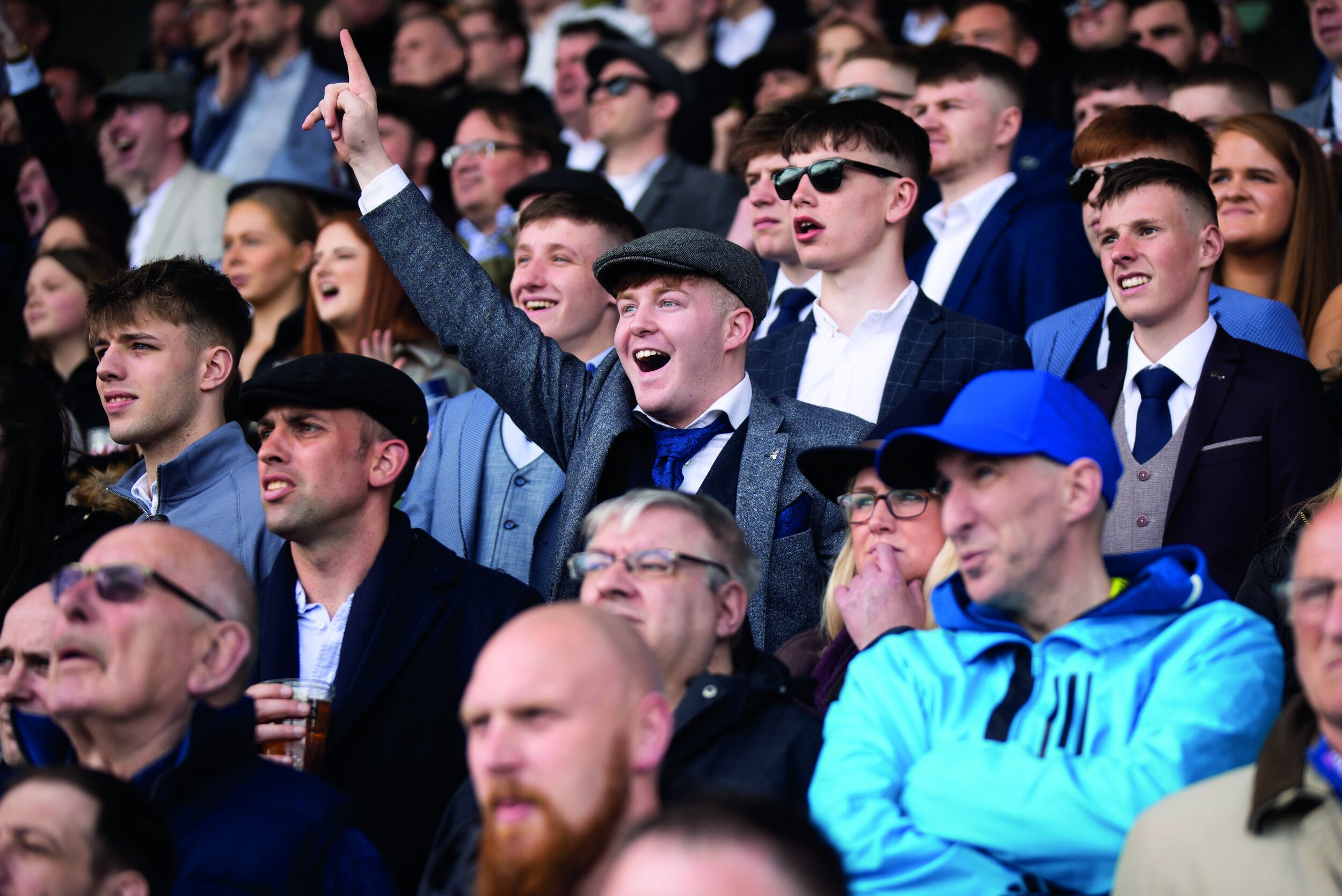Have horse will travel - The key races and prize money earning opportunities on offer this summer
/Article by Lissa Oliver
European Pattern changes
A well-publicised European Pattern Committee (EPC) review of European races was made earlier this year and the EPC sanctioned a total of 814 Black-Type races to be held in Europe in 2025, down from 826 in 2024, with 411 Gp. races (416 in 2024) and 403 Listed races (410 in 2024). A total of five Pattern races have been downgraded in 2025, and 12 Listed races have lost their status.
A total of 22 Pattern and Listed races will be at risk of potential downgrade in 2026, depending on this season’s performance. Already hard-hit, Italy has nine races at risk, Germany six, Britain and Ireland two and France, Denmark and Turkey one each.
France
It is now compulsory for all trainers to enter their horses' vaccinations onto the server via the France Galop website before any race entry is validated. Most racing authorities will also require a Racing Clearing Notice (RCN) for a horse travelling abroad rather than a passport endorsement.
France Galop has implemented some changes in entry fees to be aware of with regard to Black-Type races. Based on the changes introduced for Gp.1 races in 2024, the entry fee in Gp.2 and Gp.3 races now stands at 0.65% of the total prize money. This reflects a €355/£293 reduction in the entry fee for Gp.2 races and a reduction of €210/£173 in Gp.3 races, guaranteeing sustainable funding of the Owner’s Pool (Poule Proprietaire), which funds 32% of prize money offered in Gp.1 races.
The French programme offers an opportunity to enter a horse in a Pattern race between the early closing and the supplementary entry stages and the fee has been standardised at 2% of the total prize money. Second entries, part of the revision of the entry process, will close on the Tuesday of the week preceding the race. The three Gp.2 races run over the Prix de l’Arc de Triomphe weekend are the only exceptions to this rule, their second entry closing now a Tuesday mid-September. With the aim to standardise entry fees in all Pattern races, the supplementary entry fee in Gp.2 and Gp.3 races now stands at 7.2% of the total prize money. This percentage also applies to Gp.1 races, with the exceptions of the Prix de l’Arc de Triomphe, the Prix du Jockey Club and the Prix de Diane.
The Gp. 2 Vicomtesse Vigier at ParisLongchamp, 15f/3100m, four-year-olds up, in May, has been upgraded to offer an earlier Gp. 1 opportunity for staying horses in the spring. The Gp. 1 Prix Jean Romanet, 10f/2000m, now open to three-year-olds and upwards fillies and mares, has been increased in value to €400,000/£330,280 and effectively now replaces the former Gp.2 Prix Alec Head (Prix de la Nonette) that had been on the same card at Deauville in August. Similarly, the Gp.3 Prix du Prince d’Orange, 10f/2000m, Maisons-Laffitte, replaces the 10f/2000m Gp.3 Coupe de Maisons-Laffitte and has been put back to 14th September to avoid a clash with the new date of the Arc trials. Joining the Gp.1 Prix du Moulin de Longchamp 7th September will be the three Arc trials, Gp.1 Prix Vermeille, Gp.2 Prix Foy and Gp.2 Prix Niel. Prize money for the Prix du Moulin increases from €450,000/£371,565 to €800,000/£660,560, entirely financed by the owner’s fund.
The Listed Prix Joubert has been retained in preference to the former Prix des Tourelles and will be run over 14f/2800m for three-year-old fillies and older, while the Gp.2 Prix Kergorlay, 15f/3000m, effectively replaces the former Listed Prix du Carrousel and sees its prize money increase to €180,000/£148,626 as a result.
Other prize money changes are the Gp.3 Prix du Palais-Royal 7f/1400m from €80,000/£66,000 to €150,000/£123,855. Its traditional stepping-stone, the Listed Prix Servanne 6f/1200m, increases from €55,000/£45,400 to €70,000/£57,800. However, the Gp.2 Prix Guillaume d’Ornano, 10f/2000m has been halved from €400,000/£330,280 to €200,000/£165,140 to increase prize money in other Black-Type races. The Prix d’Aumale, a trial race for the Gp.1 Prix Marcel Boussac, has been upgraded to Gp.2 with a value of €130,000/£107,340.
The Black-Type programme for two-year-olds has been altered in the hope of increasing the number of starters and improving the competitiveness of the races, particularly throughout September. The decision was made to stagger some races and redefine their role by changing distances and surfaces. The Gp.3 Prix des Chenes 8f/1600m moves from the beginning of September to 20th September at Chantilly, becoming a stepping stone for the Gp.1 Criterium International. The Gp.3 Prix de Conde is now 10f/2000m, from 9f/1800m, at Saint-Cloud as a stepping stone for the Gp.1 Criterium de Saint-Cloud. The Gp.2 Prix Thomas Bryon 7f/1400m moves to 18th November on the Chantilly fibresand, three weeks after the Criteriums at Saint Cloud. The Listed Prix Isonomy 9f/1800m will also be run on the Polytrack at Chantilly, 27th October.
Finally, the Gp.2 Gros-Chene at Chantilly has been downgraded to Gp.3 and the Listed Prix Ceres at Fontainebleau has lost its Listed status.
Britain
Britain will stage two new Gp.1 races this year, with both the City of York Stakes, 7f/1400m, three-year-olds up, at York in August, and British Champions Long Distance Cup, 16f/3200m, three-year-olds up, at Ascot in October, being upgraded. Both races will also see a significant increase in total prize money for this year. The City of York Stakes now joins the Prix de la Foret at ParisLongchamp in October as the only two all-aged 7f/1400m Gp.1 races in Europe.
BHA’s Director of International Racing and Development, Ruth Quinn, observes, “A very different picture to this time last year, with the outcome of the EPC meeting an encouraging demonstration of what can be achieved when we work together. It really is a significant achievement to see the City of York upgraded to a Gp.1, with this having been our long-term and ambitious plan as the race gradually climbed through the ranks from Listed status. York has been a patient and consistent supporter of the long-term strategy to develop this race into Britain’s 7f Gp.1 race, only the second of its kind in Europe. Similarly, it’s wonderful to now be in a position to reward the Long Distance Cup on Qipco’s British Champions Day and see that too, become a long-awaited and much-deserved Gp.1 event. The overall progress for the stayers’ project across Europe is extremely heartening; we must continue to add fuel to the upward momentum being experienced.”
Qipco British Champions Day at Ascot will become the first British raceday to stage five Gp.1 races, following the upgrade of the British Champions Long Distance Cup. Prize money for the race will also be increased to £500,000 this year, bringing it in line with the Fillies’ & Mares’ and Sprint races. The day will also feature a new £250,000/€301,800 race for two-year-olds, bringing the total value of the day to €5.21m/£4.35m. The new race will be a 6f/1200m conditions race open to all two-year-olds and to be run without penalties. Details will be released later in the year.
Ascot’s near neighbour, Newbury, have also announced increased prize money increases for two Gp.2 races - the Hungerford Stakes and the Mill Reef Stakes.
Each race has been boosted by £25,000, bringing the Hungerford Stakes to £150,000 and the Mill Reef Stakes to £125,000.
Newbury Racecourse Executive are also offering a £50,000 bonus, for any horse who wins any two-year-old race at Newbury this year and then goes onto win the 2025 Mill Reef Stakes. £40,000 will be paid to the winning owner and £10,000 to the racing staff of the winning trainer.
Some British Black-Type races have moved, the Gp. 3 Criterion Stakes in June, 7f/1400m, moving from Newmarket to York, while the Listed Fred Archer Stakes in July, 12f/2400m, has moved from Newmarket to Beverley and has been renamed the Charlie Wood Stakes, in honour of the local Hull-born Victorian jockey. In November, Newcastle has lost both the Listed Churchill Stakes, 10f/2000m, and Listed Golden Rose Stakes, 6f/1200m, to Southwell, where they will be run one week later. To maintain an optimum gap, the Listed Wild Flower Stakes at Kempton Park, 12f/2400m, has been moved back by two weeks in December. The Listed Rothesay Stakes, 10f/2000m, will move from Ayr to Haydock Park and be run 24th May.
In addition to the EPC changes, over €3.92m/£3.3m in prize money will be available across 89 High Value Developmental Races for the 2025 Flat season in a further boost for the British racing and breeding industry. Richard Wayman, Director of Racing at the BHA, explains, “We are really pleased to confirm the continuation of the High Value Developmental programme for 2025 after another successful year. It is important for us to take steps to encourage the racing and breeding of horses in Britain, and the increased returns in prize money that these races provide is a vital part of that process.
“It has been brilliant to see the races so well engaged with by owners and trainers, and that wouldn’t be possible without the support of British Stallion Studs (EBF), Darley, Juddmonte and Tattersalls, who have worked together with the BHA to enable this initiative to thrive. We are also grateful to the Horseracing Betting Levy Board and our host racecourses for supporting the running of the races.
“In producing this year’s list of races, we have increased the focus on the staying horse as part of our ongoing strategy to attract and encourage quality horses with an aptitude for stamina. We very much hope to grow this significant initiative in the future.”
The programme of races, primarily for two-year-olds and three-year-olds at the beginning of their careers, begins with a €47,550/£40,000 three-year-old contest at Southwell 15th March and concludes at Chelmsford 1st December. Introduced in 2023 with 63 races, this year sees 89 races, with 31 Open Novice/Maiden races for two-year-olds, worth a minimum of €47,550/£40,000, 30 Restricted Novice/Maiden races for two-year-olds, worth a minimum of €35,660/£30,000, and 28 Open Novice/Maiden races for three-year-olds up, worth a minimum of €47,550/£40,000.
Simon Sweeting, Chairman at British Stallion Studs (EBF), says, “The British EBF will again lead the industry sponsorship of this £3.3 million project in 2025 which focuses prize money into a vital, foundation area of the programme. With Open Maiden and Novices worth a minimum of £40,000 and Restricted races a minimum of £30,000, we hope more owners and trainers will target the great prize money on offer in these development opportunities for their horses' careers.”
Ireland
The Gp.2 Golden Fleece Stakes at Leopardstown, on Irish Champions Weekend in mid-September, will be upgraded to Gp.1 for 2026 and will increase in distance from 8f/1600m to 9f/1800m, for two-year-olds. The Gp.3 Anglesey Stakes, 6f/1200m in late-July will swap dates with June’s Gp.2 Railway Stakes over the same course and distance at the Curragh, in an attempt to create better progression through the Irish Pattern for two-year-olds. The Gp.3 Blue Wind Stakes, 10th May, will swap dates with the Listed Naas Oaks Trial Stakes 25th June.
A new Listed race for two-year-olds, the 8f/1600m Pat Smullen Stakes at Naas in early-July, will be run with similar allowances as those of the Irish EBF Median Sires Series. Jonathan Mullin, Director of Racing at Horse Racing Ireland, points out that the race “feeds into that strategic policy around producing and retaining quality middle-distance and staying horses, and it is fitting that the newest addition to the Irish Pattern roster should be named in honour and in memory of one of our finest riders.”
Mullin says, “The welcome upgrade of the Golden Fleece Stakes by the EPC is a continuation of efforts to promote the production of stamina, and is part of a suite of Irish measures, some already in place, to assist that strategic ambition. The Gp.1 Golden Fleece will, in 2026, be an option for staying two-year-olds on better ground than is likely in late October for the Futurity Stakes, the Criterium de Saint-Cloud and the Criterium International, but will also act as a lead-in to these three races, many of which are being won and heavily populated by Irish-trained runners.”
As part of its commitment to the production and retention of middle-distance and staying horses in Europe, Horse Racing Ireland will review the opportunities, including for auction and median auction horses, for two-year-olds at 8f/1600m and beyond later in the season.
The Gp. 3 Athasi Stakes has been increased to 8f/1600m and will now be for three-year-old only fillies. The Gp.3 Cornelscourt Stakes has been opened up to three-year-olds up fillies and decreased to 7f/1400m. The Listed Cairn Rouge Stakes 8f/1600m is now for three-year-old only fillies and the Gp.3 Rathbride Stakes has increased to 10f/2000m and is now for four-year-olds up fillies. The Listed Listowel Stakes has been reduced to 8f/1600m and the Listed Navigation Stakes has changed to 10f/2000m and is now restricted to three-year-olds only. The Listed Victor McCalmont Memorial Stakes is now 9f/1800m and for four-year-old up fillies. Among the European automatic downgrades, the Gp.3 Amethyst Stakes, 8f/1600m at Leopardstown in May has been downgraded to Listed.
The Irish European Breeders’ Fund has also announced new initiatives and record-high sponsorship of €3.1m/£2.56m for 2025. Supplementary to this spend are prize money commitments of €150,000 to Irish EBF-named races in Britain and for retired racehorses through TREO EILE. Principally, the sponsorship has allowed for the creation of the new Smullen Series of 18 middle-distance races for two and three-year-olds, including the new aforementioned two-year-old Listed race at Naas in July named in honour of Pat Smullen.
The Spring Series of races originally designed for middle-distance three-year-olds, including the valuable €200,000 Gowran Classic, will become part of the overall Smullen Series that will provide trainers, owners and breeders of middle-distance horses valuable opportunities to race throughout the season.
To boost prize money and interest in nursery races, there will be three Irish EBF nursery handicaps each worth €40,000/£33,000, starting in August, followed by the Auction Series Nursery at Cork in September and culminating with the traditional Birdcatcher Premier Nursery at Naas in October. There is also a total of €1.6m/£1.32m of prize money on offer for two-year-olds in the successful Auction Series and the Median Sires Series, which both include big race targets in the €120,000 Irish EBF Auction Series Final and the €200,000 Irish EBF Ballyhane Stakes.
Jessica Harrington, 2024 Gowran Classic and Auction Series Final-winning trainer observes, “Last year we were lucky to have won two big prize money pots from the Irish EBF, the first running of the €200,000 Gowran Classic with Fleur De Chine and the €120,000 Auction Series Final in Naas with Fiona MacCoul. Those two races alone brought in €182,000 in prize money for our owners and gave them tremendous thrills in the process. The exciting new Smullen Series with the new Listed is another example of how the Irish EBF is constantly coming up with great ideas and keeping prize money at the core of its decisions.”
Ralph Beckett, for whom Pat Smullen rode his first Breeders’ Cup winner in 2008 with Muhannak, adds, “The new Smullen Series is a wonderful showcase for middle-distance horses that is sure to put the spotlight on these type of horses to help promote their breeding and retention in the training ranks.”
Scandinavia
On Sunday 24th August, Øvrevoll racecourse stages its annual Norwegian Derby Day card which also features the 35th running of the Gp.3 Marit Sveaas’ Memorial and will a have a total purse of 1.200.000 NOK (approx. € 103,500), and 750.000 NOK (approx. € 64,700) to the winner. Travel concessions for horses trained outside of Scandinavia will be available.
This Gp.3 contest is one of the most valuable run in Europe over 1800m (1m1f) and is sponsored by Kistefos a Norwegian company who played a significant role in Norway's industrial history.
The Derby Day card also boasts two Listed races - The Polar Cup at 1370m ((6f185y) and the Lanwades Stud Stakes at 1600m (1m). The winning filly / mare of the latter race will be entitled to a complimentary nomination to a suitable Lanwades stallion for the 2026 breeding season.
Two races have been upgraded to Listed status in Sweden and Denmark, the Valley Chapel Memorial in July at Jagersro, 8.5f/1730m, for three-year-olds up, and the Zawawi Sprint at Klampenborg in August, 6f/1200m, for three-year-olds up.
Italy
Milan has created the new Listed Premio Bimbi for two-year-old colts and geldings, over 6f/1200m, in June and the Gp.2 Derby Italiano in Rome has moved from mid-May to a national holiday, 2nd June. But the remainder of changes this season are far from good news for the Italian industry. At Milan, the Gp. 2 Gran Criterium, 7.5f/1500m for two-year-olds has been downgraded to Gp.3. The Gp.3 Premio Primi Passi 6f/1200m for two-year-olds is now Listed. And the Seregno, the Mario Incisa della Rocchetta, Nogara Memorial Mil Borromeo, Gran Premio d’Italia, and Merano all lose Listed status. Similarly in Rome, losing Listed status are the Conte Felice Scheibler, Rumon Memorial Daneile Porcu, Criterium di Pisa, and Piazza Dei Miracoli.
In a statement, the Associazione Nazionale Allevatori Cavalli (ANAC, Italian breeders’ association) insisted the defence of the Italian Black-Type races had been fought for “tooth and nail”. As a result, the Gp.2 Oaks d’Italia (11f/2200m) and now downgraded Gran Criterium, together with several other races issued with EPC warnings, have been given make-overs to attract better quality entries, with the comment from ANAC, “MASAF (Ministry of Agriculture) rightly puts in the money, our owners do their best by buying where and how they can... When the market in a country is reduced to the bare bones, it is the only lifeline. However, a change of gear is needed between payment of prizes, betting reform and revaluation of our breeding, which has too few [foals] born to be competitive in the rest of the world.”
Germany
The initial closing for the 54th running of the Gp.2 Comer International Orleander-Rennen (Sunday 11th May) will have passed ahead of publication date. But trainers have an opportunity to make supplementary entries on Wednesday May 7th.
The winner of this race receives an all-fees paid invitation to the $250,000 (prize money paid to all horses) Gr.2 Belmont Gold Cup, Invitational for 4yo+, 3200 metres (about 2 miles) on turf at Saratoga on June 6th 2025.
The first, second and third placed horses are also entitled to a free entry in the Irish St. Leger, Gp.1, 2800 metres (about 1 mile and 6 furlongs) €500,000 (prize money paid down to eighth place) on September 14th, 2025 at The Curragh.
The winner of the 135th running of the Gp.1 Westminster Grosser Pries von Berlin on Sunday August 11th will receive an automatic entry to the Japan Cup, Gr.1, 2400m turf, on November 30th, 2025. The conditions for the Japan Cup, rules for travel allowances and the bonus programme can be found at www.japanracing.jp/en/japancup/jc/2025.
Losing Listed status are the Diana Trial 9f/1800m at Baden-Baden in early June and the Grosser Preis der Hannoverschen Volksbank 7f/1400m at the end of May at Hannover. This is worrying for the German industry, where already on the EPC watchlist are the Gp.1 Deutsches Derby, Gp.1 Preis der Diana and Gp.2 Mehl-Mülhens-Rennen (German 2000 Guineas). Two Listed sprints and the Gp.3 Goldene Peitsche 6f/1200m at Baden-Baden have been added to the watchlist this year. In an effort to rest the decline of the two Classics, the Deutsches Derby will be worth €390,000/£321,900 to the winner and the Preis der Diana worth a first prize of €300,000/£247,600.
Good news for the fillies, however, is that the Gp.2 German 1000 Guineas at Dusseldorf in May (supplementary Entry 9am 21st May €12,500/£9,900), with a value of €125,000/£103,270, is now a win-and-you’re-in race for Newmarket’s €333,000/£275,000 Gp.1 Falmouth Stakes 11th July. As well as picking up €70,000/£58,000, the winner of the German 1000 Guineas will receive an all-fees paid invitation to Newmarket.
Both the Listed 6f/1200m Hamburger Fliegerpreis and Listed 6f/1200m Hoppegartener Fliegerpreis will receive prize money boosts to bring the value of each race to €40,000/£33,000, while the Goldene Peitsche over the same distance will now be worth €70,000/£57,800.
In a statement, Deutscher Galopp Managing Director Daniel Krüger said, “A strong sprint programme is of crucial importance for German racing and our breeding. Without targeted support, there is a risk of a gradual erosion of this segment, which would have negative long-term consequences for owners, trainers and breeders. With these measures, we are sending a clear signal that we are acting early to preserve these races and the diversity of our racing. I am particularly proud that we as an association are acting with foresight and setting the course for a stable future of the German sprint programme. Our commitment shows that we not only recognise problems but also move forward with well-thought-out concepts.”
Turkey
The Gp.3 International Istanbul Trophy, 8f/1600m at Veliefendi has been downgraded to Listed, having dropped off the international radar somewhat and attracted only domestic runners in recent years.
New York Focus
With the re-opening of the historic Belmont Racetrack next year, 2026, it seems timely to look at the opportunities on offer to European runners at the New York tracks.
Belmont Park
The New York Racing Association (NYRA) will fully utilise the new all-weather Tapeta track at Belmont Park for future winter racing. Still under construction, it’s expected to be ready for re-opening in late 2026, when the one-mile (1600m) oval will become the exclusive winter racing surface on the NYRA circuit. While race dates for 2026-27 are still to be determined, NYRA anticipates approximately three months of racing exclusively on the all-weather surface. This reflects NYRA’s commitment to improving all aspects of winter racing at the new Belmont Park. Crucially, shifting from dirt to the all-weather in the winter months will enhance equine safety and provide additional opportunities for NYRA’s year-round horse population.
“At its core, our vision for the new Belmont Park is centred around modernising racing and training facilities in ways that will ensure the sport’s continued success and future growth,” says Dave O’Rourke, NYRA President and CEO. “NYRA has closely tracked the evolution and application of synthetic surfaces, and the relevant data unequivocally supports a shift to the all-weather surface during the winter months. Together with the renovated main track and two new turf courses, Belmont Park will provide a multitude of quality options for both training and racing throughout the year.”
Saratoga
New York's Triple Crown week returns to Saratoga this year with the Belmont Stakes Racing Festival. The Gr.1 Belmont Stakes (12f/2400m), the final leg of the Triple Crown, will be run in June in Saratoga Springs. The Belmont Stakes Racing Festival runs from 4th to 8th June with the Belmont Stakes on Saturday 7th June.
Saratoga has a new meeting for the summer with the addition of the July Fourth Racing Festival from 3rd to 6th July, kicking off the summer season. The traditional summer meet will open on Thursday 10th July, featuring 40 days of racing including Whitney Day and Travers Day, concluding on Labor Day weekend. The Jim Dandy Stakes date is yet to be announced, but is a traditional stepping stone to the Travers Stakes.
The Gr.1 Whitney Stakes, 9f/1800m, on 2nd August is one of the highlights of the Saratoga season, with a purse of $1m/€926,155/£776,186, attracting the top older horses, for four-year-olds up. The centrepiece, however, is the Gr.1 $1.25m/€1.16m/£970,233 Travers Stakes, 10f/2000m, 23rd August, attracting many of the horses that contested the Triple Crown earlier in the year, for three-year-olds only.
Churchill Downs
In other North American news, Ascot, The Jockey Club and Churchill Downs have extended their Wild Card Initiative for American runners and European horses travelling to the States. Launched last year, it ties together Royal Ascot, The Derby Festival and the Kentucky Derby meeting at Churchill Downs in a commitment by all three parties to create links between historic races in the UK and high-profile, top quality turf races in the USA. The ultimate aim is to build the international profile of these races by increasing the number of runners travelling from the US to the UK and vice versa.
Continuing on from last year, a runner from each of the Edgewood Stakes for three-year-old fillies and the American Turf Stakes for three-year-old colts will receive an entry for The Oaks and Derby respectively. An invitation will also be offered to a runner from both races for Royal Ascot.
A runner from the Gr.2 Edgewood Stakes, 8f/1600m, $500,000/€463,135/£387,900, run on Kentucky Oaks Day, Friday 2nd May, will receive an entry and travel incentive for the Group 1 Coronation Stakes on the Friday of Royal Ascot, 20th June, as well as an invite to The Oaks on Friday 6th June.
Similarly, a runner from the Gr.1 American Turf Stakes, 8f/1600m, $1m/€926,155/£776,186, run on Kentucky Derby Day, Saturday 3rd May, will receive an entry and a travel incentive for the Group 1 St James’s Palace Stakes on the opening day of Royal Ascot, Tuesday 17th June, as well as an invite to The Derby on Saturday 7th June.
Those two races join the existing Gr.2 Twin Spires Turf Sprint Stakes, 5.5f/1100m, $500,000/€463,135/£387,900, and the Gr.1 Old Forester Bourbon Turf Classic Stakes, 9f/1800m $1m/€926,155/£776,186, both run on Kentucky Derby Day, which also provide Wild Card entry to Royal Ascot. The Twin Spires Turf Sprint Stakes links into the Group 1 King Charles III Stakes and the Old Forester Bourbon Turf Classic Stakes offers the option of either the Group 1 Queen Anne Stakes or the Group 1 Prince of Wales’s Stakes.
In return for the above incentives for USA-based runners, a runner from both the Group 1 Queen Anne Stakes, 8f/1600m, and the Group 1 Prince of Wales’s Stakes, 10f/2000m, receives an entry and a travel incentive to run in the Colonial Downs’ Gr.1 Arlington Million Stakes, 10f/2000m $1m/€926,155/£776,186, in mid-August.
In addition, a runner from the Group 1 Falmouth Stakes, 8f/1600m, at Newmarket’s July Festival will also receive an entry and travel incentive to run in the Gr.2 Beverly D Stakes for three-year-olds and up fillies and mares, 1m 1.5f, $500,000/€463,135/£387,900 on the same day as the Colonial Downs Arlington Million.
Of particular note is the fact that, in the event that the winners aren’t able to take up their invite, racecourses may then also invite placed horses. The elimination procedures in these races will remain as they are now. Nick Smith, Director of Racing and Public Affairs at Ascot Racecourse, says, “We are delighted to extend this initiative to include the two Group 1 three-year-old races over a mile at Royal Ascot. In recent years we have seen top-class clashes between the Guineas winners from Britain, Ireland and France in the St James’s Palace and Coronation Stakes so if we could add the best of the American Classic generation over a mile on turf to those races as well that would be really exciting.
“We look forward to working with Churchill Downs and the UK Jockey Club on this exciting plan once again and hope to build on the recent growth in interest from American connections of having runners at Royal Ascot. Their participation always adds hugely to the meeting and, with NBC once again set to broadcast the whole week.”
Gary Palmisano, Vice President of Racing for Churchill Downs Incorporated, adds, “We are thrilled to continue and expand this partnership with Ascot and The Jockey Club. This partnership further strengthens the international connection between our historic race meets. Churchill Downs has long been committed to showcasing world-class racing and we look forward to hosting some of the world’s best turf horses over Kentucky Derby weekend.”





















